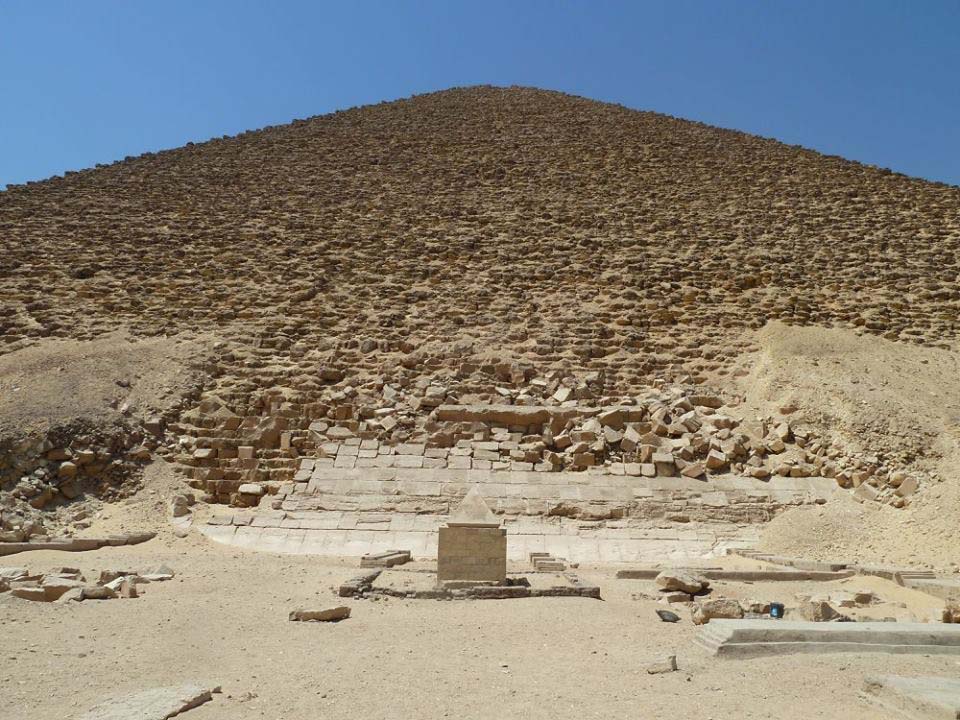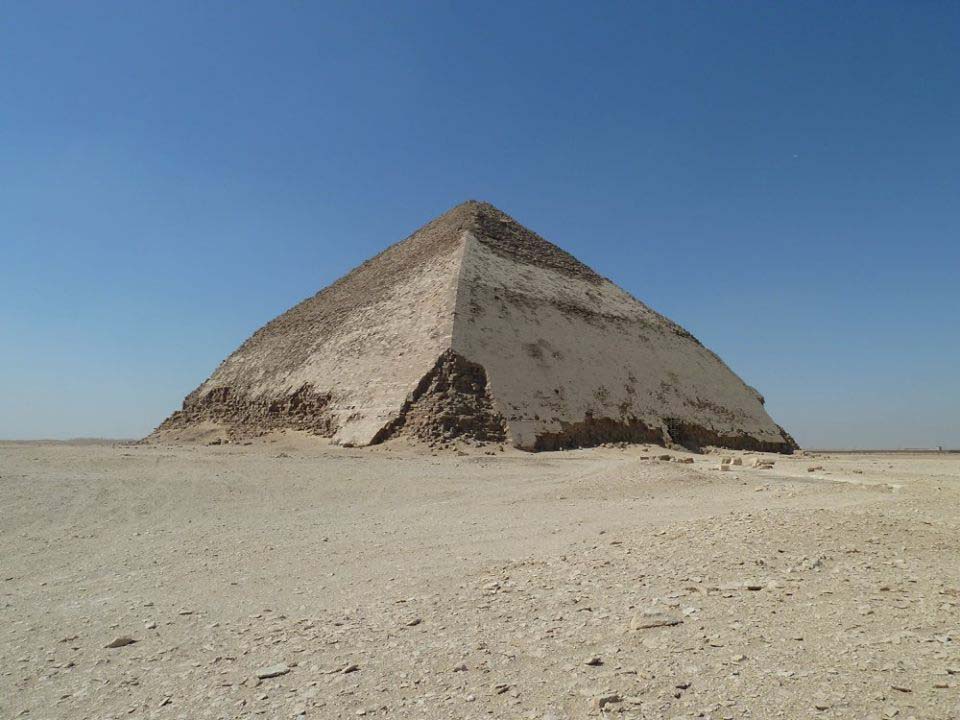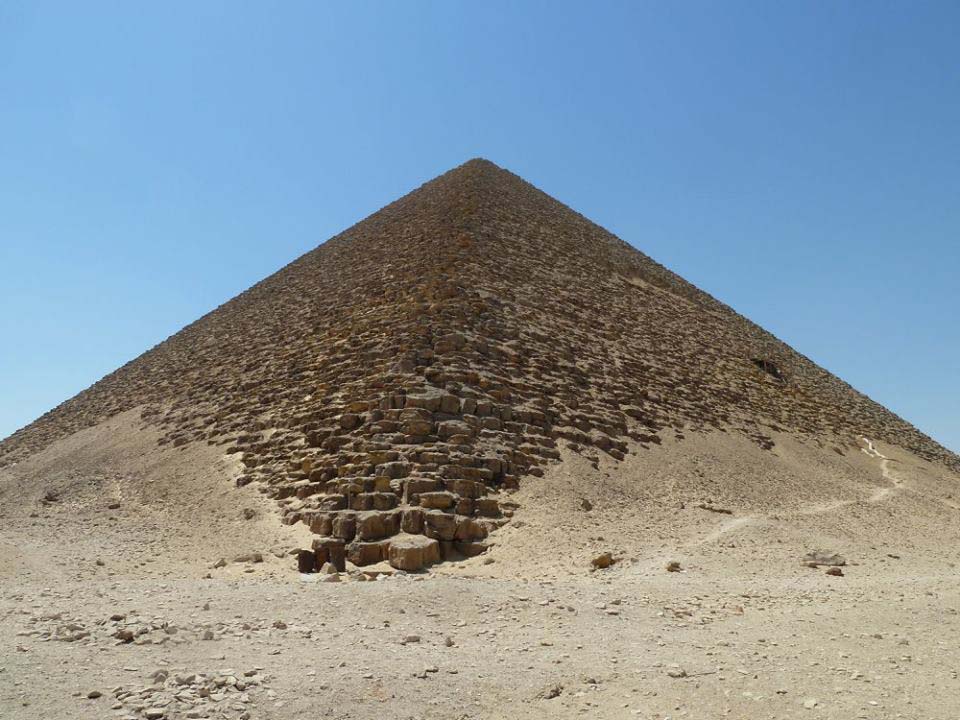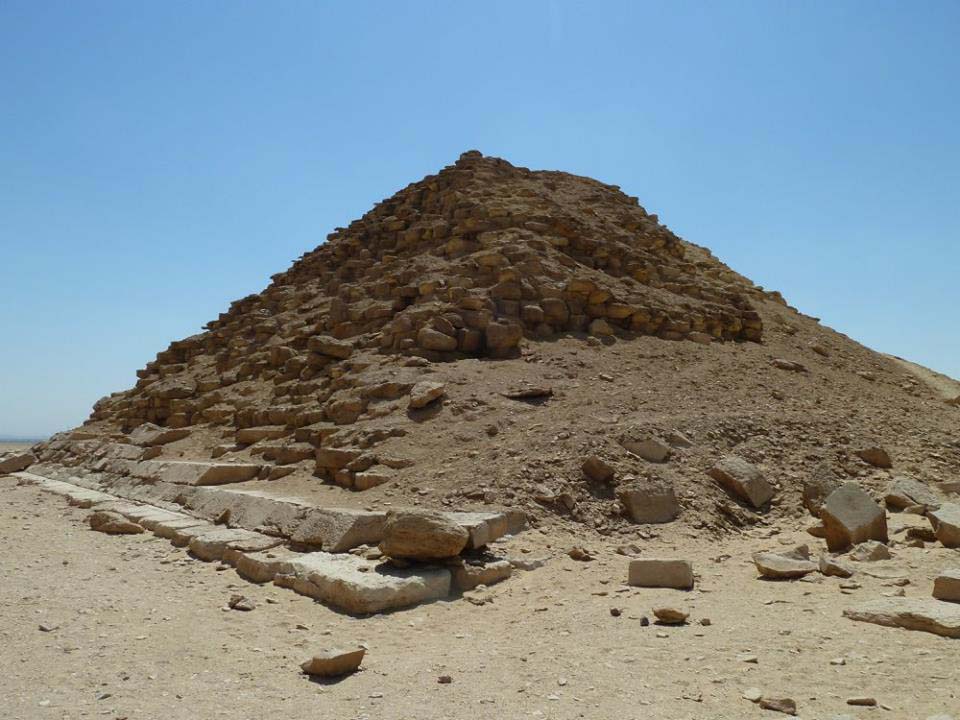Dahshur pyramids facts, discription, location
Dahshur archaeological site, its Red and Bent Pyramids, when to visit and how to explore the sight. Beautiful surroundings of the area and history of the necropolis is on one day tour from Cairo to Dahshur.

Visiting Dahshur nowadays
Dahshur is a royal necropolis located in the desert on the west bank of the Nile almost 40 kilometres south of Cairo. It is known for its several pyramids, two of which belong to King Senefru, the founder of the 4th Dynasty and father of King Khufu, along with other pyramids and tombs of the Middle Kingdom, including the Black Pyramid of Amenemhat III and the White Pyramid of Amenemhat II.
It also has the 600 feddan wide lake of King Farouk which is filled in September, attracting different species of birds from all over the world.
Dahshour lies 2 km from the South Saqqara pyramid area and contains 5 pyramids. The 1st is that of Sesostris III (Senusert – 1840 BC), then the stone pyramid of Amenemhet II (1900 bc) follows that of Amenemhet III . After that 2 pyramids of Snefru known as Red Pyramid and Bent Pyramid. Not all pyramids in Dashur are well preserved. On the east side of Dashur you cannot help but notice the pyramid of Amenemhet III known as the Black Pyramid because what is left of its mud brick interior is very dark.

Bent pyramid of Dahshur
The Bent or South Pyramid was the 1st pyramid to begun as a true one, owes its name to the change in angle of slope which went from 54.27’ to 43.22’. If the pyramid had been completed according to plans, it would have been the greatest. The entrance is located at a height of 11.5 m on the north side, its descending corridor leads to a first chamber with a vaulted projecting ceiling 17 m high. You can ascend a few meters from the 1st chamber to reach the 2nd and 3rd chambers, the two chambers with vaulted projecting ceilings. This pyramid has a satellite pyramid on its south side and a small funerary temple was once on its east side. There is a 700 meters long causeway leading to the valley temple. The original height of the pyramid is 105 m, its base 188x188 meters.

Dahshur Red Pyramid
The Red or North Pyramid is known due to the colour of limestone used in its construction. It is the 2nd largest pyramid in Egypt and was entirely constructed using the lower angle 43.22’, that was applied to the upper part of the Bent Pyramid. The entrance to the pyramid is located on the north side at a height of 28 meters from the ground and it leads to a long corridor about 60 m, that opens into a beautiful chamber with a projecting vaulted ceiling over 12 m high. The corridor continues leading to the 2nd chamber. The center of this chamber corresponds to the center of the pyramid. From this chamber the corridor ascends to reach the burial chamber. The ceiling of the 2nd and 3rd chambers is vaulted.
We can walk around the pyramid to its east face, since part of it has been cleared from rubble we can now see some of the original white limestone casting from Tura quarry across the river. There was a simple funerary temple against the east face of the pyramid; apparently it was being built in stone and then was finished in mud brick when the king died. All the stone of the temple and most of pyramid casing was cut and taken away in the Middle Ages. The foundation of the mud-brick part of the temple have been restored. The smashed pieces of the pyramidion, the pointed block that once capped the pyramid, have been put back together and the pyramidion is displayed in the temple area. On the right side of the temple you can still see root pit remaining from the trees that grew in the temple garden. If we drive south to the Bent Pyramid we will notice an entrance up high on the west side as this pyramid had 2 entrances, north and west. A nicely preserved small south pyramid also known as a satellite pyramid either for the king’s ka (soul), or symbolic of Abydos in the south where the earliest kings of Egypt were buried. And a rather battered small chapel on the east with remains of two stelae that would have been carved with Sneferu’s name.

New Pyramid discovery
In 2017 the remains of a 13th Dynasty pyramid have been discovered by an Egyptian archaeological mission working in an area to the north of King Snefru's Bent Pyramid in the Dahshur Necropolis. The portion of the pyramid which had been uncovered shows a part of its inner structure. This structure is composed of a corridor leading to the inside of the pyramid and a hall that leads to a southern ramp, as well as a room at the western end. An alabaster block measuring 15 cm by 17 cm was also found in the corridor, engraved with 10 vertical hieroglyphic lines that are still being studied. A granite lintel and a collection of stoney blocks showing the interior design of the pyramid have also been uncovered. Preliminary studies on hieroglyphs found in newly discovered pyramid ruins in the Dahshour necropolis have revealed a cartouche of the 13th Dynasty King Emny Kamaw. Offering texts are engraved on the ruins, as well as a female name of the king's family.